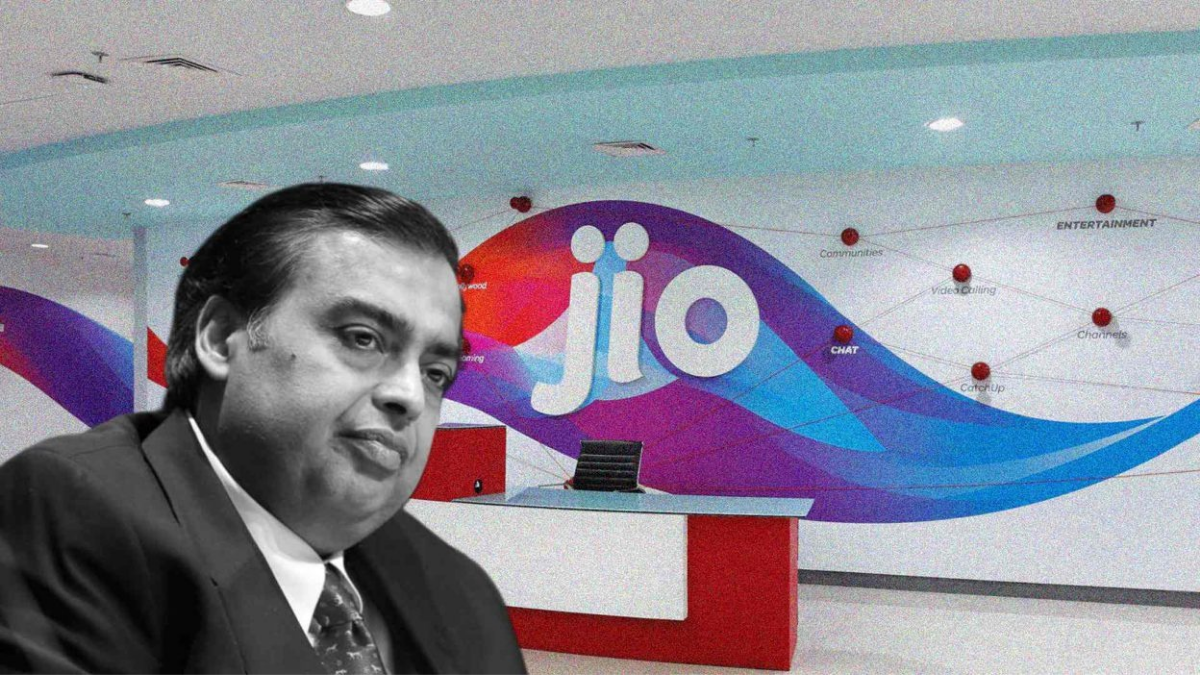Reliance Jio Q2 FY25 Results – Reliance Jio, India’s largest telecom operator and the digital arm of Reliance Industries, has reported strong numbers for the July–September quarter (Q2 FY25). The company showed impressive growth in net profit, revenue, and operating margins, mainly driven by tariff hikes, higher data usage, and strong subscriber engagement.
In this post, let’s take a detailed look at Reliance Jio’s Q2 FY25 results, the key reasons behind the growth, challenges ahead, and what it means for customers as well as investors.
IN THIS ARTICLE
Reliance Jio Q2 FY25 Results Highlights
Reliance Jio continued its strong performance during the quarter, showing double-digit growth in almost all major financial metrics.
- Net Profit: ₹6,231 crore, up 23% year-on-year (vs ₹5,058 crore last year).
- Revenue from Operations: ₹28,338 crore, up 14.5% YoY (vs ₹24,750 crore last year).
- EBITDA: ₹15,036 crore, up 16.1% YoY (vs ₹12,953 crore last year).
- EBITDA Margin: 53.1%, compared to 52.3% last year.
- Average Revenue per User (ARPU): ₹195.10, up 7.4% YoY.
- 5G Subscriber Base: Around 148 million, contributing nearly 34% of total data traffic.
This performance makes Jio one of the strongest growth drivers for Reliance Industries in FY25.
Source: Reliance Industries Q2 FY25 Financial Results (Press Release)
Strong Growth in Profit and Revenue
The company’s net profit rose to ₹6,231 crore, showing a 23% increase compared to the same quarter last year. This strong profit growth was supported by higher revenue and better margins.
Revenue from operations increased to ₹28,338 crore, marking a 14.5% rise compared to Q2 FY24. The main reason behind this growth was higher ARPU, strong subscriber retention, and increased data usage due to 5G adoption.
EBITDA (Earnings Before Interest, Taxes, Depreciation, and Amortization) also grew 16.1% to ₹15,036 crore. More importantly, the EBITDA margin improved slightly to 53.1%, showing that Jio is able to manage its costs effectively while expanding revenue.
Key Reasons Behind Jio’s Strong Q2
1. Tariff Hikes and ARPU Growth
One of the biggest reasons for Jio’s revenue and profit growth is the increase in ARPU (Average Revenue per User). ARPU rose to ₹195.10 in Q2 FY25, compared to ₹181.70 a year earlier. This 7.4% growth was supported by tariff hikes and more customers opting for higher-value plans.
For telecom companies, ARPU is a critical metric. It shows how much money each subscriber contributes on average. Jio’s steady ARPU growth means the company is successfully moving towards profitability while maintaining its customer base.
2. Rising 5G Adoption
Reliance Jio has been rapidly expanding its 5G services across India, and it is already seeing strong adoption. The company now has around 148 million 5G users, who contribute nearly one-third of Jio’s total data traffic. This shows that more customers are shifting towards higher-speed plans, boosting both data usage and revenue.
3. Strong Data Consumption
India is one of the largest consumers of mobile data in the world, and Jio plays a major role in this growth. With the availability of affordable plans, rising smartphone penetration, and wider 5G coverage, data consumption continues to rise. This naturally supports Jio’s revenue growth every quarter.
4. Operational Efficiency
As revenues increase, Jio is able to spread its fixed costs over a larger subscriber base. This is why its EBITDA margin improved to 53.1%. A small margin improvement may look minor, but in a large-scale business like telecom, even a 1% gain adds up to huge savings.
Challenges Ahead for Jio
While Reliance Jio’s Q2 performance is strong, the company still faces some challenges that need attention:
- Competition in Telecom Sector: Rival companies like Bharti Airtel and Vodafone Idea may adopt aggressive pricing strategies, putting pressure on Jio to balance tariffs and subscriber growth.
- High Investments in 5G: Rolling out 5G across India requires massive capital expenditure. The cost of spectrum, towers, and network upgrades could impact future profitability.
- Subscriber Churn Post Tariff Hikes: Whenever telecom operators increase tariffs, some low-income subscribers tend to reduce usage or switch operators. Jio will need to manage this carefully.
- Regulatory and Policy Risks: The telecom sector in India is highly regulated. Any change in spectrum pricing, taxes, or government policies can directly affect profitability.
What This Means for Investors
For investors, Jio’s strong Q2 numbers are a positive sign. The steady increase in ARPU, strong profit growth, and rising 5G adoption show that the telecom business will continue to be a major growth driver for Reliance Industries.
Jio is also expanding into digital services, broadband (JioFiber, JioAirFiber), and enterprise solutions, which could add further revenue streams in the coming years. With India’s growing internet penetration, Jio’s long-term growth story looks strong.
What This Means for Customers
For customers, Jio’s strong performance means:
- Better 5G network coverage and improved internet speed.
- More digital services such as OTT content, cloud, and enterprise solutions.
- However, customers should also expect gradual tariff hikes in the future, as Jio and other operators aim to improve ARPU and profitability.
Conclusion
Reliance Jio’s Q2 FY25 results highlight the company’s strong position in India’s telecom sector. With a 23% jump in net profit, 14.5% growth in revenue, and steady improvement in ARPU and margins, Jio is proving to be a key engine of growth for Reliance Industries.
The rise in 5G users and higher data consumption are expected to continue driving growth in the coming quarters. While challenges such as competition and high capex remain, Jio’s focus on digital services and operational efficiency gives it a strong edge.
In short, Reliance Jio’s Q2 FY25 results confirm that it remains the market leader in Indian telecom and will continue to play a major role in shaping the country’s digital future.
India on Track to Overtake US in Metro Rail Length: A Big Step in Urban Transport










